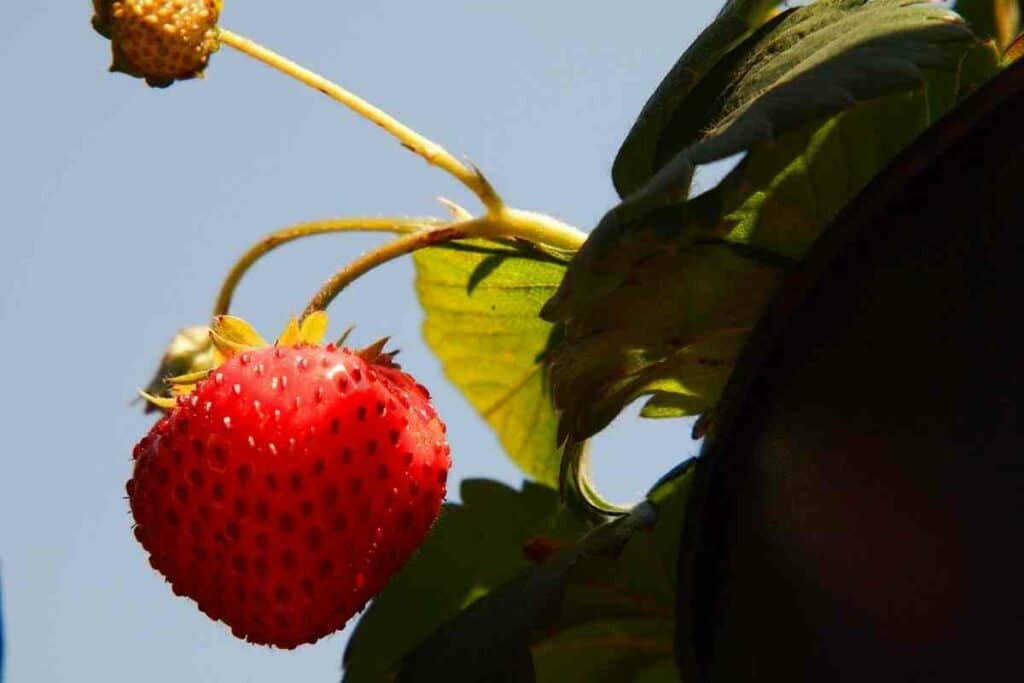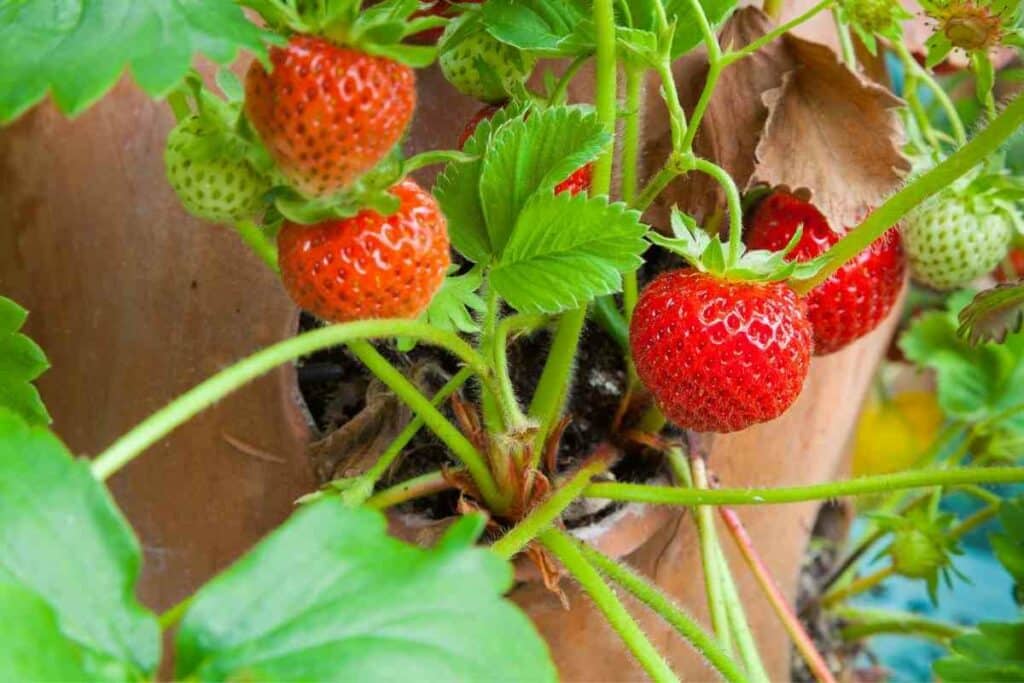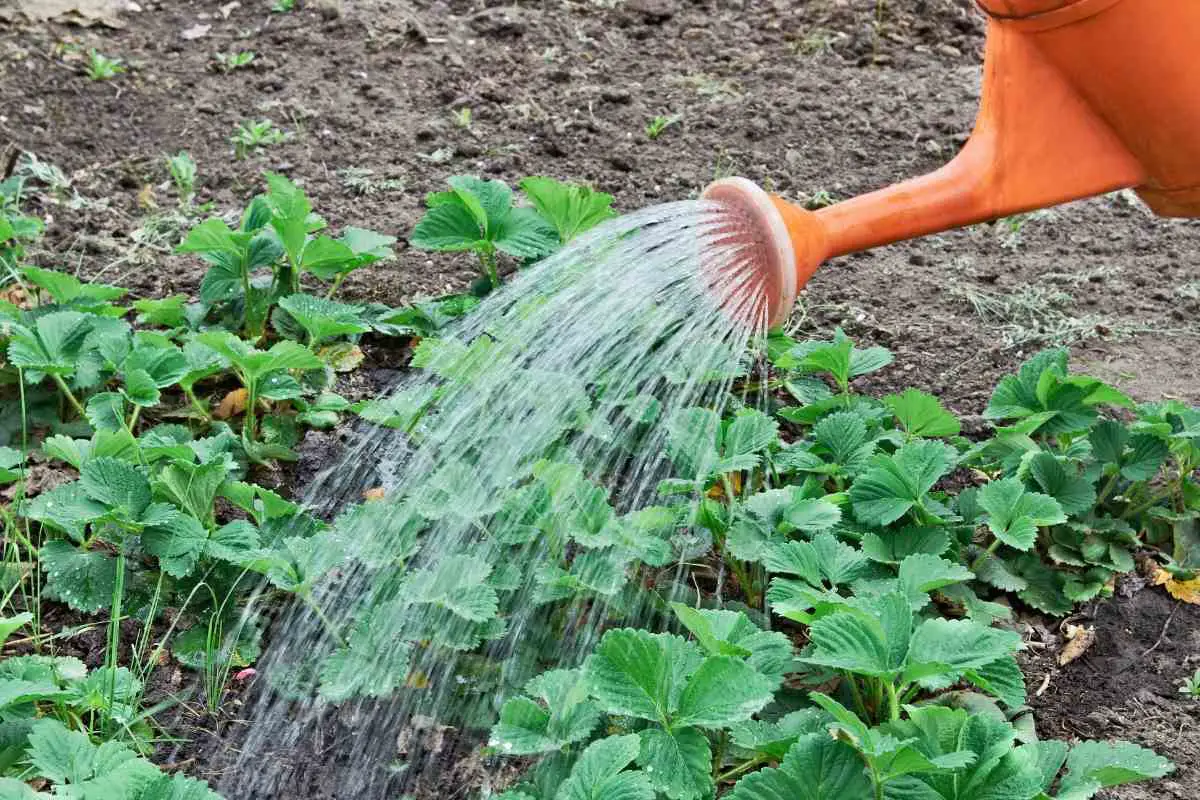Strawberry plants are beautiful and will make your backyard space attractive if they are well tended. Apart from beautifying the outdoors, they provide you with a constant supply of sweet strawberries all year round.
Strawberry plants require delicate maintenance.
Watering strawberries demands proper timing and the right amount of water to maintain balanced moisture levels.
Avoid too little water that keeps the plant dry or too much water that gets the plant soggy.
Watering timing and the right amount depends on several factors, including the type of soil, sun conditions, and the type of strawberry plant.
Also important to note is whether you’re growing the plants in a pot or garden. For example, are the strawberry plants new or established?
What to Expect? Here is a detailed guide on how to water strawberries properly. But first, let’s discuss factors that determine how to water strawberries.
Factors Determining How to Water Strawberry Pants Right
There are more than ten strawberry varieties.

Proper watering and maintenance will determine how well they perform under different circumstances.
Below are essential considerations that’ll inform your strawberry watering needs.
Soil type
Some soils retain moisture better than others. Soils also have varying levels of drainage.
For example, strawberries growing in loose soils with poor moisture retention need to be watered more frequently than those in high moisture retention soils.
For instance, clay-based soils are heavier and retain moisture better. As a result, they have low watering needs compared to loose sandy soils.
Heads Up! Strawberries need more water in their growth phase, during fruit-bearing, and during low rainfall season of less than 1.5 inches moisture level per week.
The soil should remain wet but not soggy as it can cause the plant to rot.
Sun conditions
Strawberry plants thrive under prolonged sun exposure. 6-8 hours per day is enough.

Otherwise, more is always better for tasty berries.
Extended exposure to sunlight also means higher transpiration; thus, regular watering compared to strawberry plants growing in areas with partial sunlight.
Strawberry variety
The strawberry variety you choose to grow also impacts watering frequency.
Some bear fruits earlier than others, during which the plant needs more sustained watering intervals.
However, the watering needs for different strawberry varieties don’t vary much.
Strawberry Water Requirements
Strawberries have shallow roots, barely 3 inches in the soil, making them highly susceptible to faster water loss if left unattended.
Keep In Mind – You may not need to water your strawberries often if you live in climates that receive at least 1.5 inches of weekly rainfall.
However, you’ll need to water your strawberry plants more during summer or hot climates to maintain at least 2.5 inches of soil moisture.
How to Tell it’s Time to Water Your Strawberries
Watering is sensitive for strawberry plants.

Check the soil’s moisture level before watering.
And it’s simple. Insert a wooden stick in the ground, wait for two to three days and feel the soil moisture.
If it feels dry on your hands, it’s time to water the plant.
Alternatively – Place a bucket over your strawberry plant and leave it there overnight. You should notice water beads at the edges of the leaves if the plant is getting enough water.
This method of testing moisture levels is called guttation. A moisture meter is another option you can use.
How to Water Strawberries
Watering strawberry plants is different from most plants.
Unlike other plants where you sprinkle water all over the plant from the roots to the leaves, strawberries rot quickly when the leaves are exposed to soggy conditions for extended periods.
As a result, avoid using sprinklers to water strawberry plants. Instead, use a soaker form or drip irrigation system.
Keep the irrigator at least 2 inches from the plant. Water your strawberries early in the morning to give them an entire day to soak in the sun and dry before sunset.
Check the moisture levels more frequently if you grow your plants in containers.
Soil mixtures dry faster when placed in containers, especially in hot climates.
Always Good Idea – Consider mulching the plants to help retain moisture and prevent water from splashing to the leaves. Keep your mulch layer to about 2 inches.
Ensure the mulch doesn’t pile up to the stems as it can trigger rot or cause other excessive mulch problems.
Remember, it’s better to underwater the plants than have waterlogged soil for your strawberries.
How Often to Water Strawberries
Watering strawberry plants depends on multiple factors, as discussed herein.
However, as a general rule, strawberry plants require between 1 to 1.5 inches of water weekly and a little more during fruit-bearing seasons.
Otherwise, keep moisture or water levels to 1-2 inches daily in typical climates. Increase the watering frequency and the soil moisture to 2.5 inches during winter or hot temperatures.
Watering needs for potted strawberry plants also differ from those in the ground.
They have better drainage and are easier to care for since you can control the soil’s moisture.
Ensure you water your potted strawberries anytime the soil feels dry to the touch.
Signs of Excessive Strawberry Plant Watering
Plants depend on water and oxygen for survival.
However, the plant needs enough air pockets between the ground and the soil particles for adequate oxygen circulation, failure of which it will suffocate.
Pay close attention to any wilting signs in your strawberry plant.
While plant wilting occurs primarily due to a lack of enough water in the plants, it could also signify excessive watering.
Final Thoughts
Special considerations pan out when you think of how to water strawberries correctly.
While the soil type remains key, timing and whether the plants are in the ground, a raised bed, or planted in a pot are equally important factors to consider.
Monitoring moisture levels in a raised bed or pot is easier than in the ground. It’s the best option for planting moisture-sensitive plants like strawberries.
Otherwise, the plants should be watered keenly from planting, with a little more water during the fruit-bearing season. If you water the plant correctly, it takes about four weeks for the fruits to be ready.
Avoid overhead sprinklers. Instead, use drip irrigation systems on your strawberry plants.
